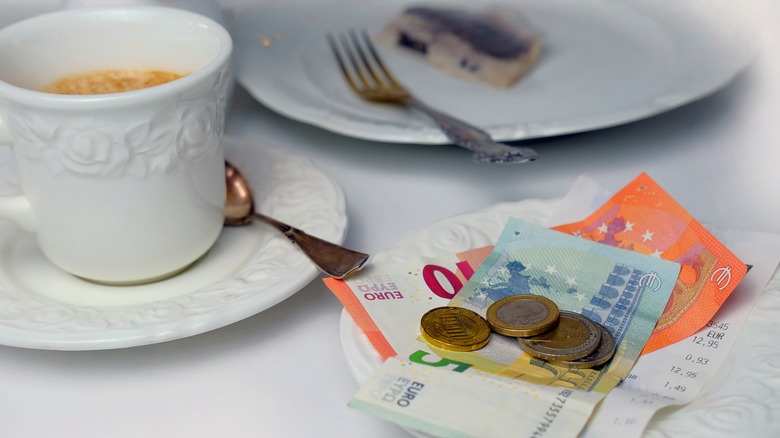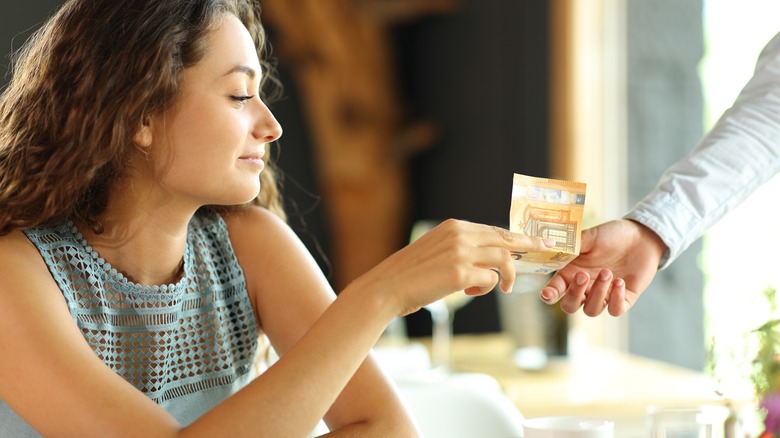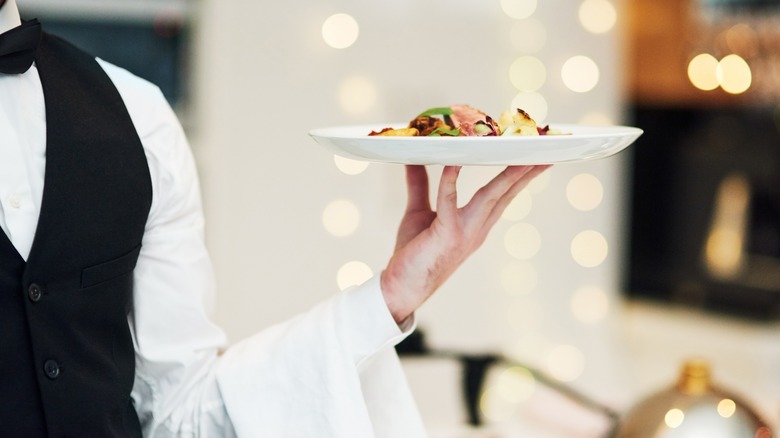The Not-Obvious Tipping Mistake You Shouldn't Make When Dining In Europe
It's no secret that tipping etiquette is very different in Europe than it is in America, particularly in restaurants. And, while the history behind tipping is rather dark, today, it's given as a gesture to recognize good service. Dining in the United States pretty much warrants a 15-20% tip across the board, but tipping expectations are much more relaxed if not altogether unnecessary on the other side of the Atlantic Ocean. Many travelers know by now that European servers don't expect such high tips; however, they may not realize that it's best to hand any tip money directly to their server rather than leave it on the table when they do tip.
Of course, this means that it's best to use cash for tipping, even if you're paying for your meal by credit card. Some restaurants won't even have a separate line on your bill to leave a tip, so keep some Euros handy for dining purposes. Making the effort to hand your server a tip will just ensure that no one else walks by and picks up the money that's been left on the table. It's important to note that servers in Europe don't give customers quite as much attention as their American counterparts do. This isn't necessarily a bad or rude thing; servers just tend to give guests more privacy until they are beckoned to a table. So, when you're ready to pay, you'll need to get their attention.
Tipping etiquette varies by country
European travel expert, Rick Steves, advises travelers not to stress too much about abiding by different tipping "rules" when traveling. Most restaurants include a service cost in the bill, so a tip is not mandatory; however, servers are usually happy to accept a small "bonus." In most countries, a 5% to 10% tip on the bill is considered generous. In all reality, local diners don't tip at all, and if they do, they simply round the bill up.
In Germany, rounding up the bill to the next highest number is considered a fine tip, as long as you hand the extra to your server in cash — and that means bills, not loose change. There is no need to tip extra in Switzerland, Belgium, or Denmark, but small gratuities will be accepted. However, in Iceland, an extra tip is never expected from servers.
Tipping at a higher rate in Europe (like you would in America) is not necessarily looked at with appreciation, but rather shows an ignorance of the local culture and societal practices. And, of course, it immediately outs you as a tourist.
Why is tipping so different in Europe?
Overall, restaurant servers in Europe are paid a living wage and have things like national health care and government-mandated paid vacation time, which are a few reasons why tipping is not nearly as prominent there as it is in America. Many American restaurant employers can pay their servers less than minimum wage with the expectation that tips will make up the majority of their income. This is why U.S. servers rely so much on their tips and why leaving a 15% tip is often considered the minimum rate you should include.
Tipping etiquette is probably much more confusing for Europeans visiting America than the other way around, considering they are used to every cost being included in their dining bill. Tipping on top of a restaurant's service fee also may throw some people off.
No matter where you are visiting, it's always a good idea to do a little homework when it comes to tipping — whether it's for restaurant servers, taxi drivers, or hotel room service. When in doubt, being cordial and asking a local is always a good idea.



